Your gateway to endless inspiration
Lemill - Blog Posts
Spaceships Don’t Go to the Moon Until They’ve Gone Through Ohio
From the South, to the Midwest, to infinity and beyond. The Orion spacecraft for Artemis I has several stops to make before heading out into the expanse, and it can’t go to the Moon until it stops in Ohio. It landed at the Mansfield Lahm Regional Airport on Nov. 24, and then it was transferred to Plum Brook Station where it will undergo a series of environmental tests over the next four months to make sure it’s ready for space. Here are the highlights of its journey so far.

It’s a bird? It’s a whale? It’s the Super Guppy!
The 40-degree-and-extremely-windy weather couldn’t stop the massive crowd at Mansfield from waiting hours to see the Super Guppy land. Families huddled together as they waited, some decked out in NASA gear, including one astronaut costume complete with a helmet. Despite the delays, about 1,500 people held out to watch the bulbous airplane touch down.

Buckle up. It’s time for an extremely safe ride.
After Orion safely made it to Ohio, the next step was transporting it 41 miles to Plum Brook Station. It was loaded onto a massive truck to make the trip, and the drive lasted several hours as it slowly maneuvered the rural route to the facility. The 130-foot, 38-wheel truck hit a peak speed of about 20 miles per hour. It was the largest load ever driven through the state, and more than 700 utility lines were raised or moved in preparation to let the vehicle pass.

Calling us clean freaks would be an understatement.
Any person who even thinks about breathing near Orion has to be suited up. We’re talking “bunny” suit, shoe covers, beard covers, hoods, latex gloves – the works. One of our top priorities is keeping Orion clean during testing to prevent contaminants from sticking to the vehicle’s surface. These substances could cause issues for the capsule during testing and, more importantly, later during its flight around the Moon.

And liftoff of Orion… via crane.
On the ceiling of the Space Environments Complex at Plum Brook Station is a colossal crane used to move large pieces of space hardware into position for testing. It’s an important tool during pretest work, as it is used to lift Orion from the “verticator”—the name we use for the massive contraption used to rotate the vehicle from its laying down position into an upright testing orientation. After liftoff from the verticator, technicians then used the crane to install the spacecraft inside the Heat Flux System for testing.

It’s really not tin foil.
Although it looks like tin foil, the metallic material wrapped around Orion and the Heat Flux System—the bird cage-looking hardware encapsulating the spacecraft—is a material called Mylar. It’s used as a thermal barrier to help control which areas of the spacecraft get heated or cooled during testing. This helps our team avoid wasting energy heating and cooling spots unnecessarily.
Bake at 300° for 63 days.
It took a little over a week to prep Orion for its thermal test in the vacuum chamber. Now begins the 63-day process of heating and cooling (ranging from -250° to 300° Fahrenheit) the capsule to ensure it’s ready to withstand the journey around the Moon and back.
View more images of Orion’s transportation and preparation here.
Make sure to follow us on Tumblr for your regular dose of space: http://nasa.tumblr.com.
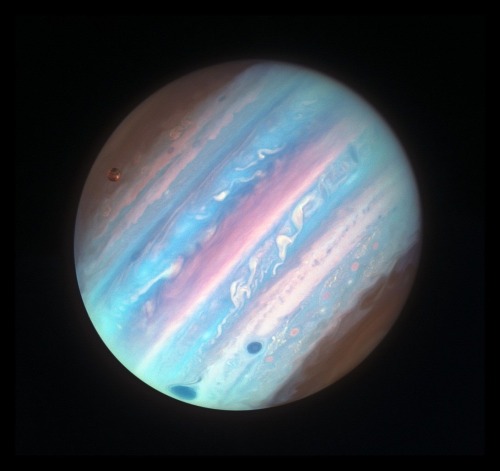
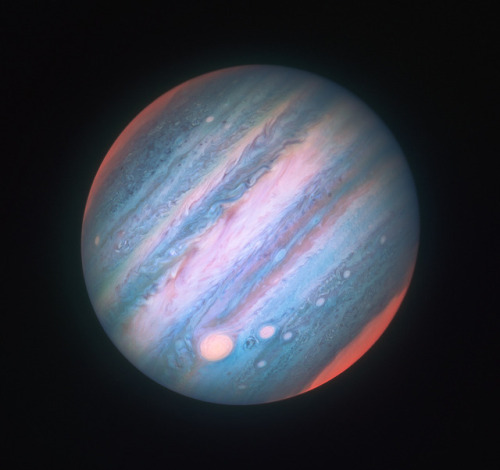
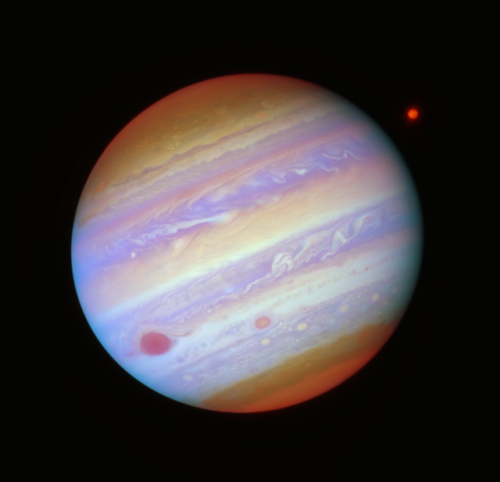
Jupiter (filtered) by Judith Schmidt.
Enchanted Moon II by Nima Shayesteh
Wolf Moon by miguel aviles - Art of Visuals Collective
Moon on the horizon, Santa Barbara | California (by A. Klioutchnikov)
And unfortunately I can’t find credit for the final photo.




The Hubble Space telescope just sent back a new photo of the Twin Jet Nebula. Here’s what it looked like in 1997:

And now …

Whoa. But wait, we also got an updated image of the merging galaxies NGC 6240. What it looked like in 2008:

And today:

Science, you’re the best. Oh, and the explanation behind those merging galaxies and their black holes is wild.
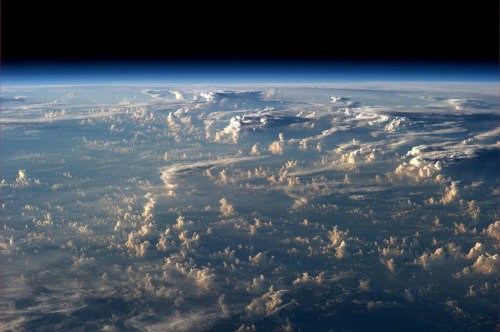
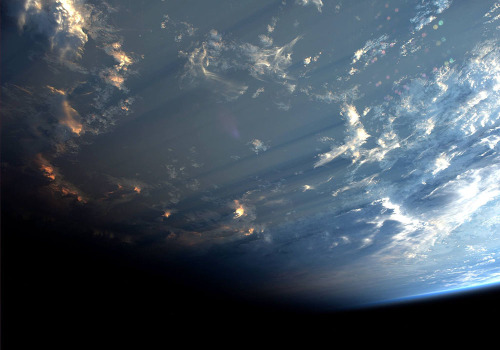
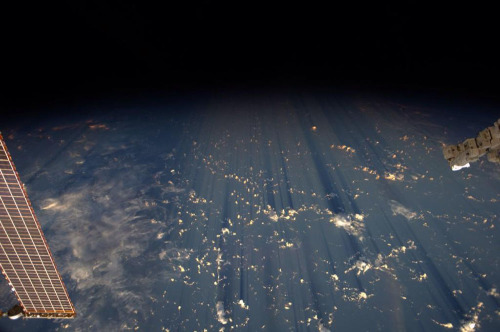
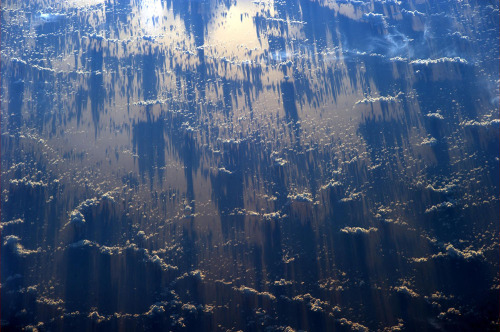
Clouds cast thousand-mile shadows into space when viewed aboard the International Space Station
Official video with credit where appropriate for the above images.
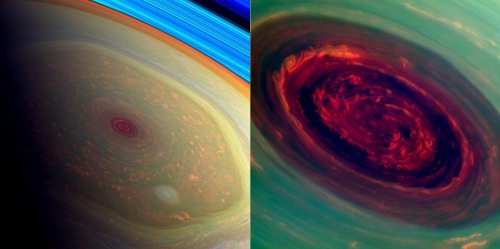
Saturn’s hexagonal storm system in it’s north pole

The Lonely Galaxy
Most galaxies are part of a group or cluster where a neighboring galaxy is never far away. Galaxy NGC 6503 however, is an exception. This galaxy has found itself in a lonely position, at the edge of a strangely empty patch of space called the Local Void. The Local Void is a huge stretch of space that is at least 150 million light-years across.
Credit: NASA, ESA, Hubble Heritage (STScI/AURA)-ESA
Source is Discovery Chanel. Here’s a video.

The largest known star in the universe, compared to Earth.
In order of appearance - Earth, Sol (Our Sun), Sirius, Betelgeuse, Canis Majoris.
Canis Majoris is in fact so large, that if it were to replace our own sun the star itself would extend outwards past the orbit of Jupiter.
[Click for more interesting science facts and gifs]

Commander Terry Virts posted video of his view. You may want to see this.
Video released by SpaceX of a pad abort test.
“The video is filmed from the point-of-view of an astronaut inside the rocket — the rocket that accelerates from zero to 100 mph in 1.2 seconds, that is.” x









Here’s the orbital period of our solar system’s 8 major planets (how long it takes each to travel around the sun). Their size is to scale and their speed is accurate relative to Earth’s. The repetition of each GIF is proportional to their orbital period. Mercury takes less than 3 months to zoom around Sol, Neptune takes nearly 165 years.

Wild Orion.
Credit: Tony and Daphne Hallas
Source: TheGeekerie









Modern geometric illustrations of Planets of the Solar System. These infographic illustrations feature a history of scientific exploration. Probes, satellites, space stations, etc., highlighting the achievements of man in astronomic discovery. Each illustration also features the distance from the Sun, rotational period in days/years and the number of confirmed, natural satellites.
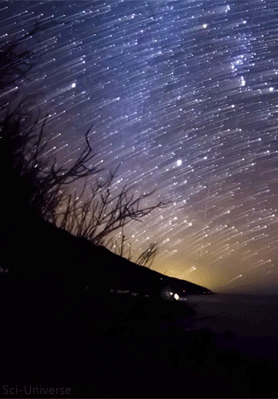

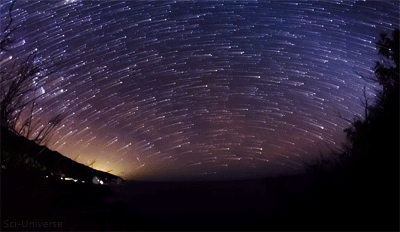
Geminid meteor shower of 2012, here’s the full video.

This is a snip of The Sharpest View Ever of the Andromeda Galaxy.
You need to go to the cite to experience it.
Source: NASA, ESA, J. Dalcanton (University of Washington, USA), B. F. Williams (University of Washington, USA), L. C. Johnson (University of Washington, USA), the PHAT team, and R. Gendler.
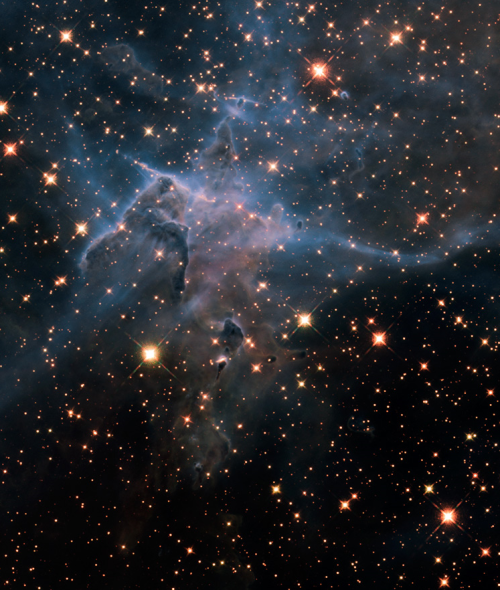
The Mystic Mountain - HH 901
This is a NASA Hubble Space Telescope near-infrared-light image of a three-light-year-tall pillar of gas and dust that is being eaten away by the brilliant light from nearby stars in the tempestuous stellar nursery called the Carina Nebula, located 7,500 light-years away in the southern constellation Carina. The image marks the 20th anniversary of Hubble’s launch and deployment into an orbit around Earth.
The image reveals a plethora of stars behind the gaseous veil of the nebula’s wall of hydrogen, laced with dust. The foreground pillar becomes semi-transparent because infrared light from background stars penetrates through much of the dust. A few stars inside the pillar also become visible. The false colors are assigned to three different infrared wavelength ranges.
Credit: NASA, ESA
![A Multi-Camera 360° Panoramic Timelapse Of The Stars By Vincent Brady [VIDEO]](https://64.media.tumblr.com/4e12ed79b6fa93fbd2f17ccd004921d6/tumblr_n7h573O5RR1rte5gyo1_500.gif)
A Multi-Camera 360° Panoramic Timelapse of the Stars by Vincent Brady [VIDEO]
Image: Jack Hughes /Twitter: @jackmrhughes

#ScienceIsCool #WeAreTheUniverse #StarSeed #Universe #Beyond #Space

Comet McNaught caught between a fireworks display and lightning.
Taken January 2007 in Perth, Australia by Antti Kemppainen.

Thousands of Stars in the Orion Nebula
Close inspection of the 2006 Hubble Space Telescope color mosaic of the Orion Nebula (M42) reveals numerous treasures that reside within the nearby, intense star- forming region. Southwest of the Trapezium stars located in the center of the nebula, a stunning Hubble Heritage portrait captures a variety of intricate objects. Deeply contrasting areas of light and dark blend with a palette of colors mix to form rich swirls and fluid motions that would make even the best artists stand back and admire their work.
Visible slightly bottom right center is the star LL Orionis (LL Ori), originally release by the Hubble Heritage Project in 2002. The delicate bow shock that surrounds LL Ori points towards the stream of gas flowing slowly away from the center of the Orion Nebula, near the Trapezium stars located off the image to the upper left. Close examination of the ends of the bow shock show secondary shocks that are formed as a two-sided jet of gas flowing away from this forming star at high velocity strikes the stream of low velocity gas from the center. To the right of LL Ori, a ghostly veil of material hangs thick and dark, obscuring portions of the nebula behind it.
Credit: NASA/Hubble

“The shockwave from a 20,000 year-old supernova explosion in the constellation of Cygnus is still expanding into interstellar space. The collision of this fast moving wall of gas with a stationary cloud has heated it causing it to glow in visible as well as high energy radiation, producing the nebula known as the Cygnus Loop (NGC 6960/95). The nebula is located a mere 1,400 light-years away. The colors used here indicate emission from different kinds of atoms excited by the shock: oxygen-blue, sulfur-red, and hydrogen-green. This picture was taken with the Wide Field and Planetary Camera 2 on board the Hubble Space Telescope.”
Photo by J Hester of ASU, description via NASA.

Making a Spectacle of Star Formation in Orion
Looking like a pair of eyeglasses only a rock star would wear, this nebula brings into focus a murky region of star formation. NASA’s Spitzer Space Telescope exposes the depths of this dusty nebula with its infrared vision, showing stellar infants that are lost behind dark clouds when viewed in visible light.
Best known as Messier 78, the two round greenish nebulae are actually cavities carved out of the surrounding dark dust clouds. The extended dust is mostly dark, even to Spitzer’s view, but the edges show up in mid-wavelength infrared light as glowing, red frames surrounding the bright interiors. Messier 78 is easily seen in small telescopes in the constellation of Orion, just to the northeast of Orion’s belt, but looks strikingly different, with dominant, dark swaths of dust. Spitzer’s infrared eyes penetrate this dust, revealing the glowing interior of the nebulae.
Credit: NASA/JPL/Spitzer

Long exposure of the sky over Yunnan Province in Southwest China.
“ ...The lingering airglow is due to chemiluminescence, the production of light through chemical excitation. Originating at an altitude similar to aurora, it can found around the globe. The chemical energy is initially provided by the Sun's extreme ultraviolet radiation.” X
The scene reflects on the Yuanyang rice terraces as Sirius shines brightly above.
Credit to Cui Yongjiang

The central bulge of our Milky Way Galaxy rises above a sea of clouds in this ethereal scene. An echo of the Milky Way’s dark dust lanes, the volcanic peak in foreground silhouette is on France’s Réunion Island in the southern Indian Ocean. Photo by Luc Perrot.

Lake Turkana in Northern Kenya. In the setting scene, Venus can be seen peeking over the clouds.
Credit to Babak A. Tafreshi








